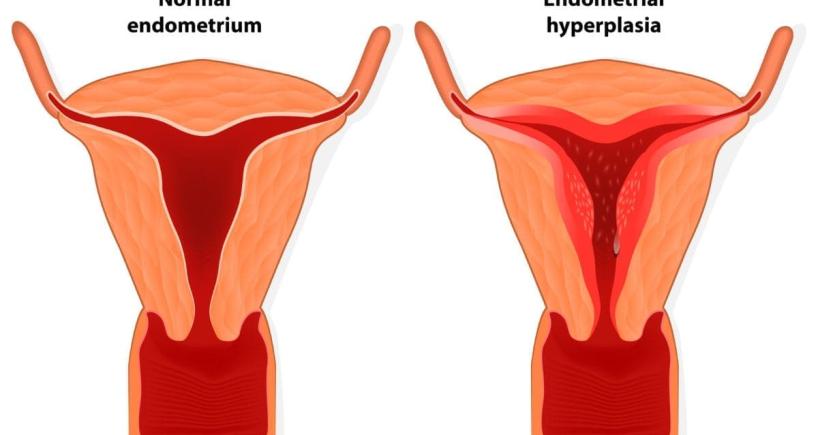What Is Congenital Adrenal Hyperplasia?
Congenital Adrenal Hyperplasia (CAH) refers to a group of inherited genetic disorders that affect the adrenal glands, a pair of walnut-sized organs located above the kidneys. These glands produce essential hormones, including cortisol, aldosterone, and androgens (male sex hormones). In people with CAH, mutations in genes responsible for producing these hormones lead to hormone imbalances that can cause a variety of health issues.
The most common form of CAH is caused by a deficiency in the enzyme 21-hydroxylase, which affects approximately 95% of cases. This deficiency impairs cortisol and aldosterone production, often resulting in excess androgen levels.

Causes and Types of CAH
Genetic Mutations and Inheritance
Congenital adrenal hyperplasia is an autosomal recessive disorder, meaning a child must inherit one defective gene from each parent to develop the condition. The gene most commonly affected is CYP21A2, which encodes the 21-hydroxylase enzyme.
Types of CAH
- Classic CAH (Severe)
- Salt-wasting CAH: The most severe form. The body cannot produce enough aldosterone, leading to salt loss, dehydration, and potentially life-threatening crises.
- Simple-virilizing CAH: Less severe than salt-wasting but still causes excess androgen production without salt loss.
- Non-classic CAH (Mild or Late-Onset)
- Often presents later in childhood or adolescence with milder symptoms such as early puberty, excess hair growth, or irregular periods.
Signs and Symptoms of Congenital Adrenal Hyperplasia
In Newborns and Infants
- Ambiguous genitalia in females (enlarged clitoris, fused labia)
- Dehydration, vomiting, and failure to thrive (especially in salt-wasting CAH)
- Low blood pressure and low sodium levels
In Children and Adolescents
- Early signs of puberty (precocious puberty)
- Rapid growth but ultimately short adult height
- Excess body hair, acne, and irregular menstruation in females
In Adults
- Fertility problems
- Irregular menstrual cycles in women
- Increased risk of adrenal rest tumors
How Is CAH Diagnosed?
Early diagnosis is crucial to prevent complications, especially in classic CAH. Newborn screening is standard in many countries and typically includes testing for 17-hydroxyprogesterone (17-OHP), a hormone elevated in CAH.
Diagnostic Tools Include:
- Blood tests for hormone levels (cortisol, aldosterone, 17-OHP, and androgens)
- Genetic testing to identify mutations in the CYP21A2 gene
- ACTH stimulation test to assess adrenal function
Treatment and Management
Hormone Replacement Therapy
The cornerstone of CAH treatment is replacing deficient hormones and managing excess androgen production.
- Hydrocortisone: Replaces cortisol
- Fludrocortisone: For salt-wasting CAH, replaces aldosterone
- Salt supplements: Sometimes necessary for infants
Monitoring and Adjustments
Treatment must be carefully adjusted, especially during times of stress, illness, or growth spurts. Regular follow-ups with an endocrinologist are essential.
Surgery and Psychosocial Support
- Surgery: In some cases, reconstructive surgery may be considered for females with ambiguous genitalia.
- Counseling: Support for patients and families is crucial, especially regarding fertility, body image, and gender identity.
Living with CAH: Practical Advice
For Parents
- Ensure newborn screening is completed
- Learn how to manage adrenal crises
- Partner closely with pediatric endocrinologists
For Adolescents and Adults
- Maintain open dialogue with healthcare providers
- Adhere to treatment and monitoring schedules
- Consider joining support groups like CARES Foundation
Emergency Preparedness
Patients with CAH are at risk for adrenal crises during illness or stress. They should:
- Carry a medical alert ID
- Have injectable hydrocortisone available for emergencies
- Educate caregivers and teachers about their condition
Long-Term Outlook and Complications
With proper treatment, individuals with CAH can lead healthy lives. However, potential complications include:
- Short stature due to early epiphyseal closure
- Obesity and insulin resistance
- Reduced fertility in both sexes
Research and Future Directions
Ongoing research is focusing on gene therapy, new medications, and improving quality of life. Studies are exploring:
- Modified-release glucocorticoids
- Better androgen receptor blockers
- CRISPR gene editing to correct the underlying genetic defects
Conclusion
Congenital adrenal hyperplasia is a complex but manageable condition when diagnosed early and treated appropriately. Understanding the types, symptoms, and treatment options empowers patients and caregivers to manage the condition effectively. If you or someone you love is affected by CAH, consulting with a qualified endocrinologist and accessing reputable resources like the Mayo Clinic or Healthline is a vital step.
Internal Links (assumed site structure):
Image Alt Text Examples:
- Image 1: Diagram of adrenal glands and hormone pathways in Congenital Adrenal Hyperplasia
- Image 2: Symptoms chart of CAH in children and adults
- Image 3: Hormone replacement therapy medications used in CAH
